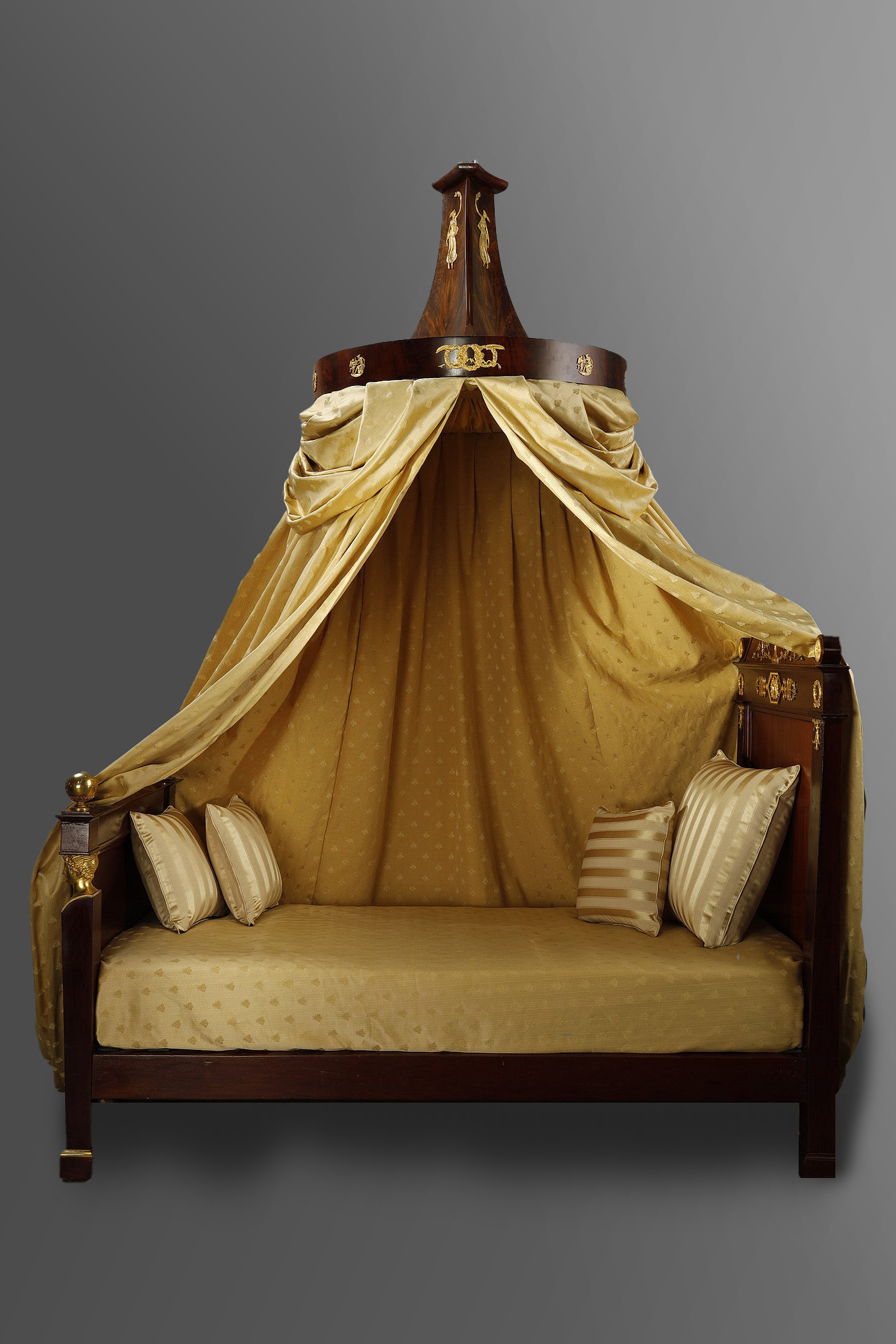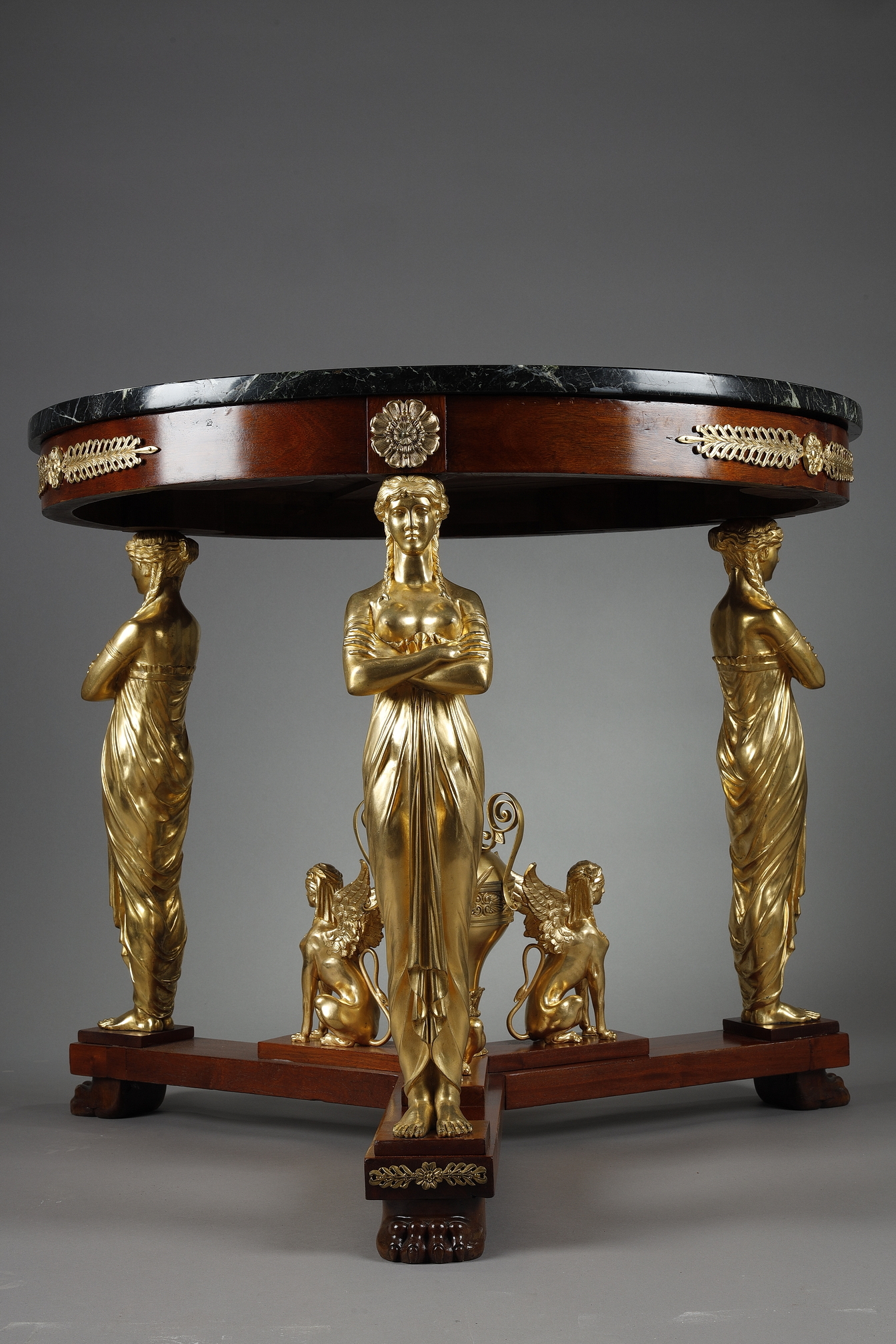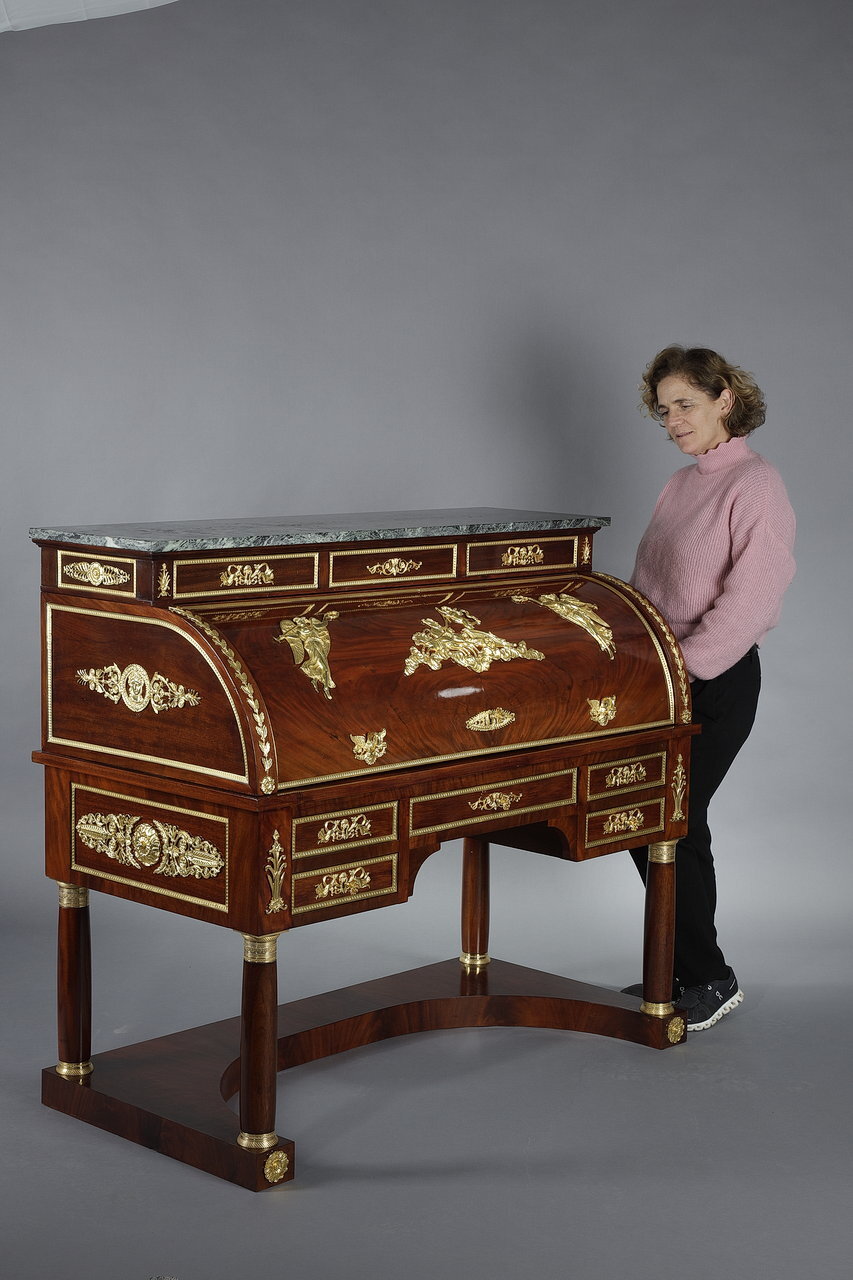The Empire style (1804-1815)
20.10.14
The Empire style developed under the impetus of Emperor Napoleon I (1769-1821), who reigned from 1804 to 1815. The first stirrings of the Empire style can be found as early as the Directory (1795-1799), but it progressed upon the return from the Egyptian campaign, notably with the Consulate (1799-1804).
Important Empire style side table
The Empire style was intended as a style of propaganda . Designed to express the power of imperial majesty, it was intended to serve the Napoleonic epic, which could only find historical equivalent in the conquests of Alexander the Great or Caesar.
This is why his inspiration deliberately neglects the tradition of French cabinetmaking since the Regency, and seeks what ancient art has produced in its most monumental form: the Rome of Augustus, the Egypt of the pharaohs or the Macedonia of Alexander the Great are the only ones likely to serve as a reference to imperial power.
 Empire period bed with its canopy
Empire period bed with its canopy
Under the impetus of Charles Percier (1764-1838) and Pierre-François Fontaine (1762-1853), architects and ornamentalists of Napoleon I trained in Rome with a taste for classical antiquities, cabinetmakers, notably the two sons of George Jacob, imposed an official style, established to enhance the splendor of the Empire.
The furniture
Subject to Greco-Roman art , the Empire style, stripped down, noble and massive, has a dignity that admirably serves the majesty of Napoleon.
The furniture as a whole is heavy, massive, and imposing. It features balanced, geometric shapes, rectilinear frames, and sharp angles, most often crafted from solid mahogany or mahogany veneer. When mahogany ceased to arrive in France around 1810, Napoleon recommended that cabinetmakers use native woods: walnut, elm, ash, golden beech, or sometimes wood stained to resemble mahogany. The application of gilt bronze ornaments to these dark woods further enhanced their brilliance. The furniture then became laden with symbolic embellishments that reflected the emperor's classical tastes.
 Majestic Empire-style living room
Majestic Empire-style living room
The boat bed, the ministerial desk, the tripod pedestal table, and the mirrored wardrobe become common pieces of furniture. Consoles, tall and narrow bookcases, tall "psyche" mirrors, and massive chairs with stiff legs ending in claws or constructed in a "saber" shape join them in apartments.
The decor and ornamentation
All the furniture is embellished with gilt bronze motifs, matte, burnished and very finely chiseled, generally applied in a simplified manner. Strictly decorative, they are distributed symmetrically on the flat surfaces, enlivening their otherwise sober forms.
The flat patterns are remarkable because the chiseling is so fine and crisp, and the design so precise.
 "The Spinner" clock signed Rossel
"The Spinner" clock signed Rossel
Favorite motifs include the stylized palmette, the scarab and Egyptian-inspired caryatids in sheaths, oak, laurel, or ivy leaves, sometimes arranged in a wreath, the sphinx and sphinxes, swans, dolphins, winged lions, eagles, bees, lyres, trophies, and stars. The warlike decorations of Republican Rome, winged victories, Fame, and ancient chariots are also widely used.
The predominant colours are golden yellow, green, crimson, violet and purple.
 Pair of Paris porcelain baskets, Empire period
Pair of Paris porcelain baskets, Empire period
At once simple and majestic, solid and theatrical, the Empire style appears essentially new. It rejected all the frivolities of the Ancien Régime, everything that could evoke the Bourbon legacy.
Its ample and dry lines, its ornamentation inspired by great vanished civilizations, its exceptional quality of manufacture make it a witness to a glorious era, where the aim was to surpass the triumph of legendary heroes.



